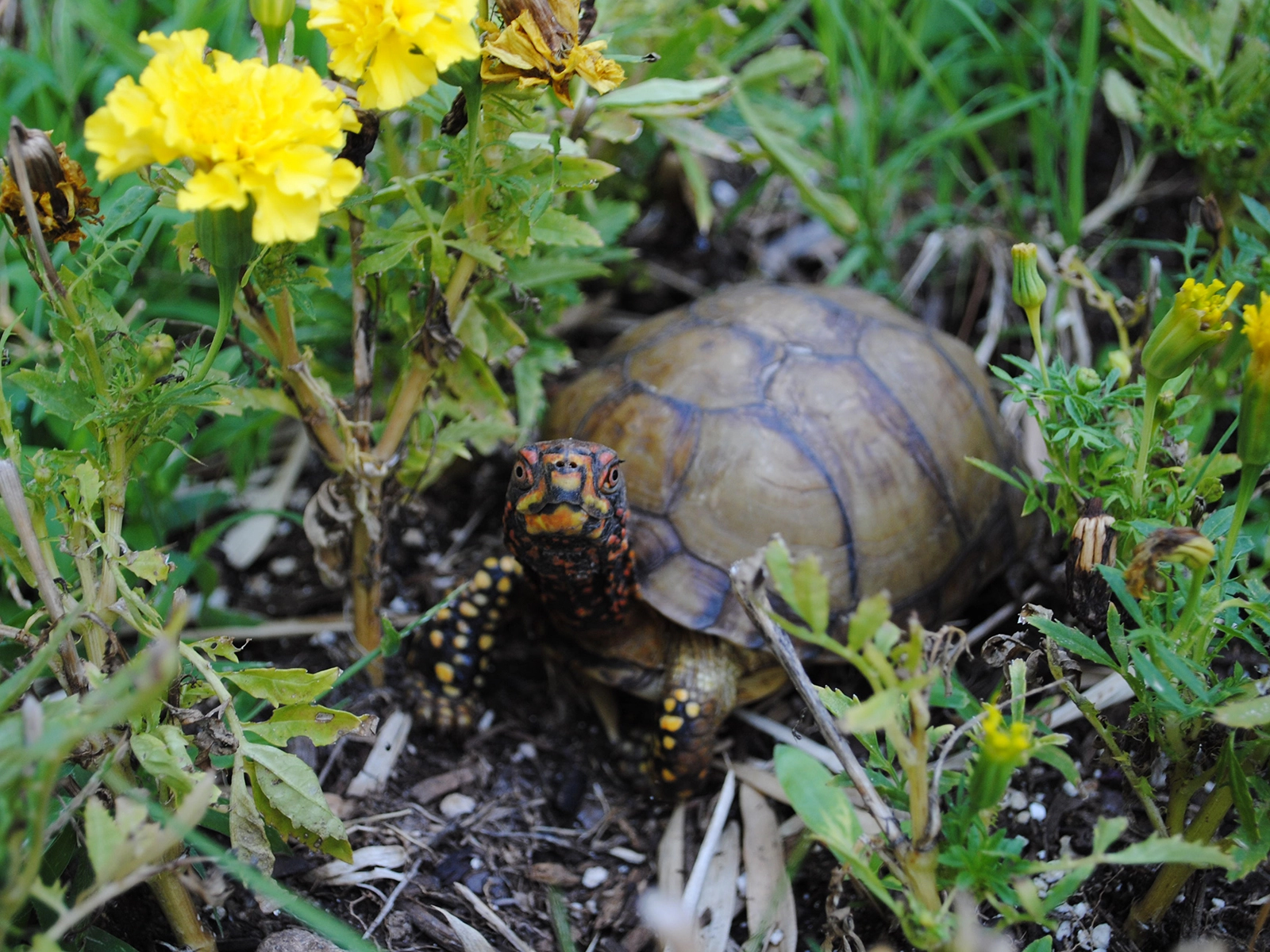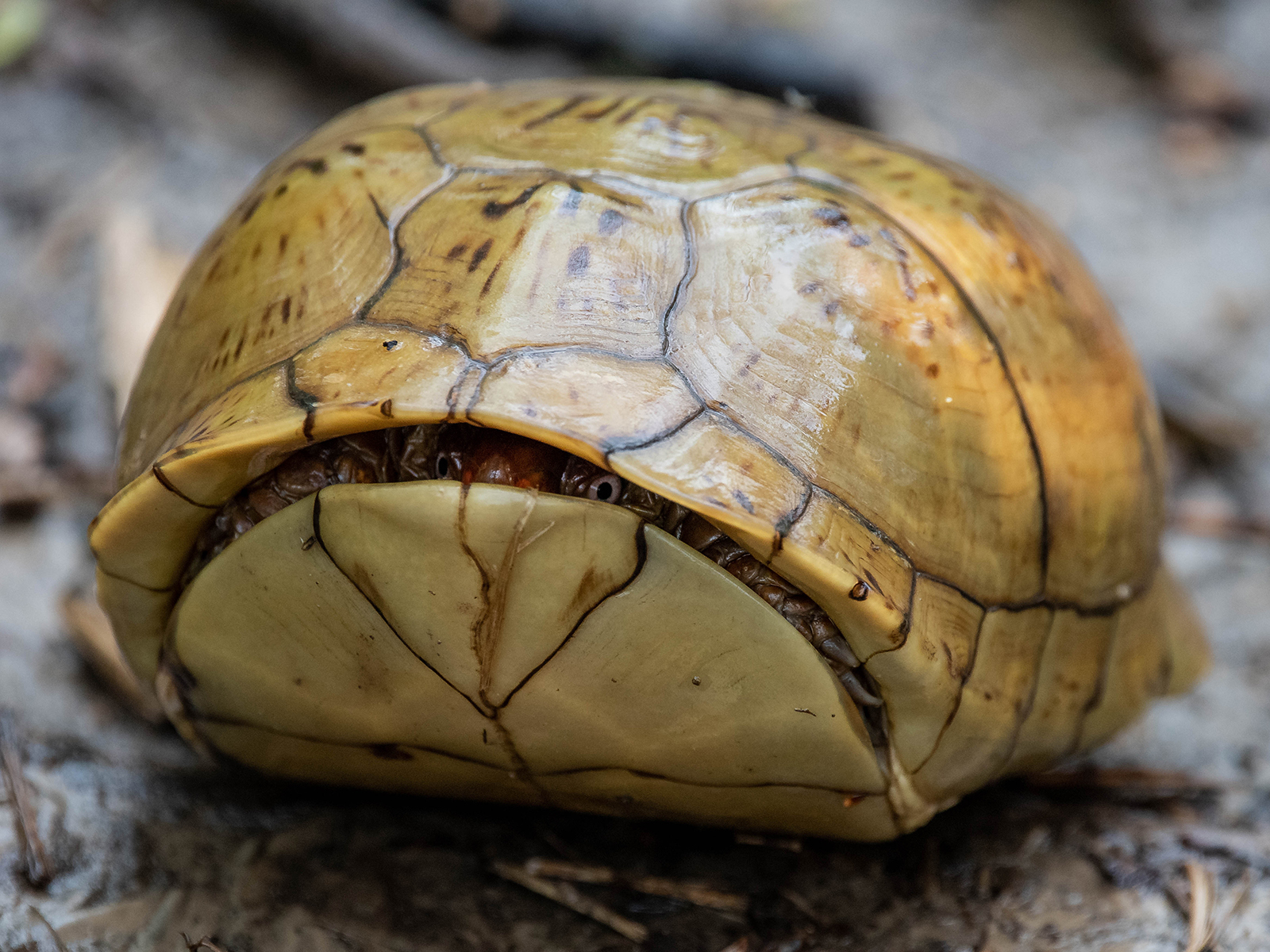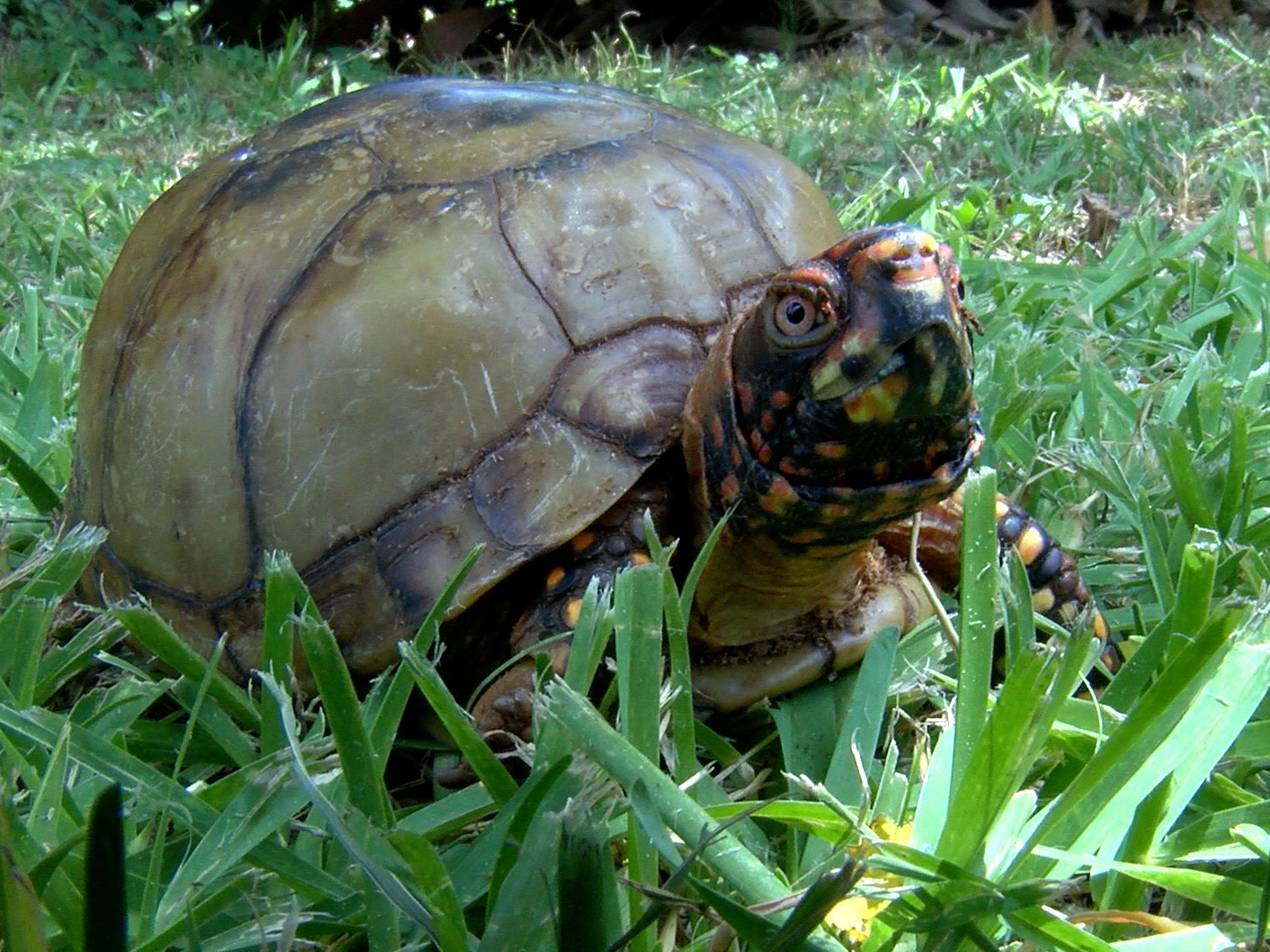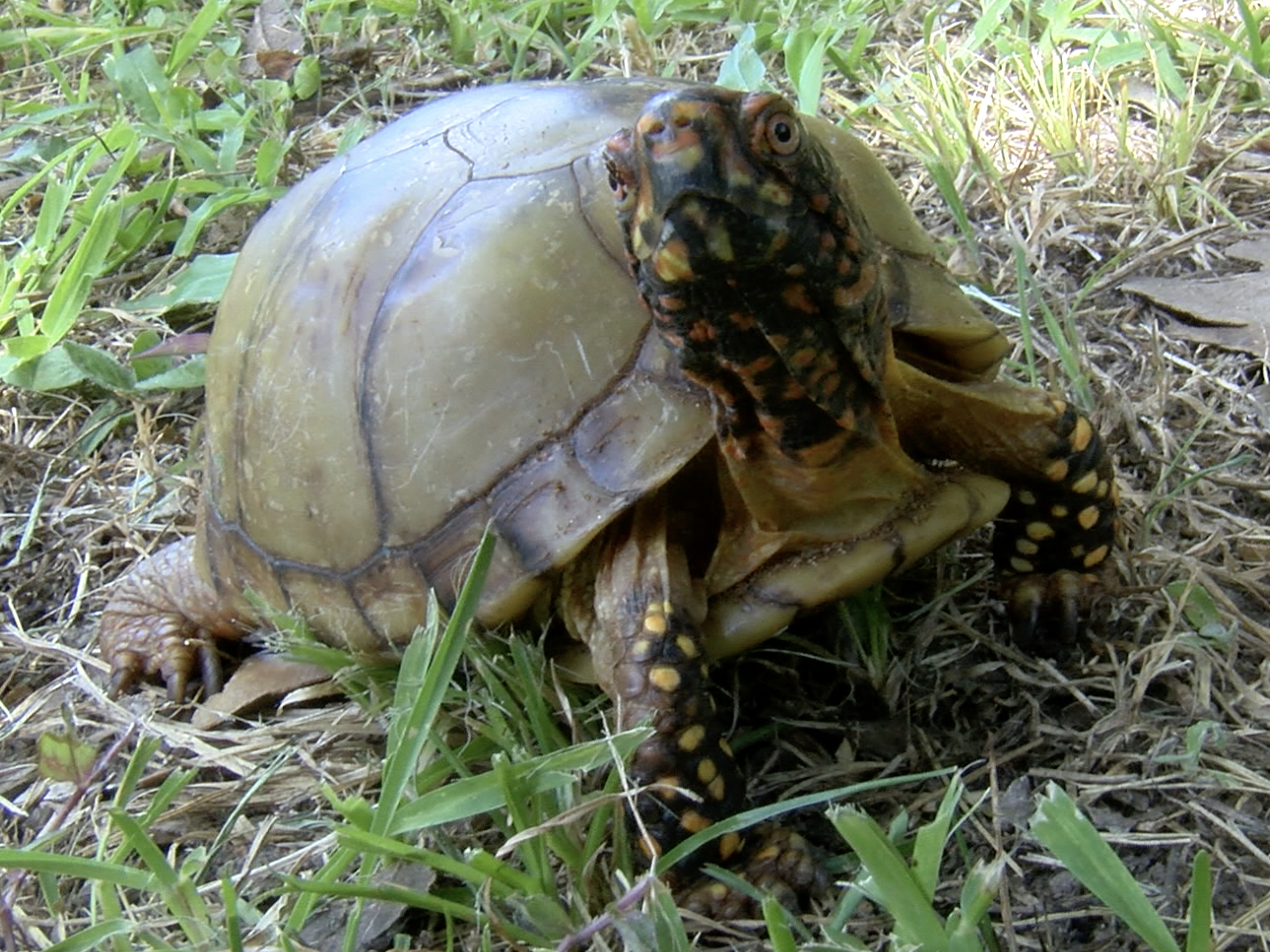Eastern Box Turtle
Terrapene carolina
Class
Reptilia
Order
Chelonia
Family
Emydidae

Reptilia
Chelonia
Emydidae
Most of eastern and southern United States
Carapace 4.5 - 6 in
Open woodlands, pastures, and marshy meadows
Clutch: 2 - 8 eggs
Incubation: 2 - 3 months
Plants, fungi, smaller animals, and carrion
Vulnerable
All box turtles have a distinctive hinged, bilobed plastron (the dark brown lower shell), which enables them to fully enclose their bodies when threatened.

Male box turtles have red eyes and females have brown eyes. Two to eight white eggs are laid in the spring or summer. Young turtles hatch in two to three months; however, some clutches laid in summer may not hatch until the following spring.

Box turtles face threats from the pet trade and habitat loss.

Speedy Hatched 2004
Go Wild. Avoid aggressive lawn maintenance. Leave a patch of your yard wild, with leaf litter, brush piles, or old logs. This provides shelter, a place to forage for food (slugs and insects), and a place to hibernate safely.
Provide Water. In hot, dry weather, a shallow dish of water sunk into the ground provides a crucial spot for them to drink and cool off.
Never Relocate. Don't take a turtle to a "better place" miles away (like a park or pond). They have a strong homing instinct, and if moved, they will spend the rest of their lives desperately trying to get back to their small home range.